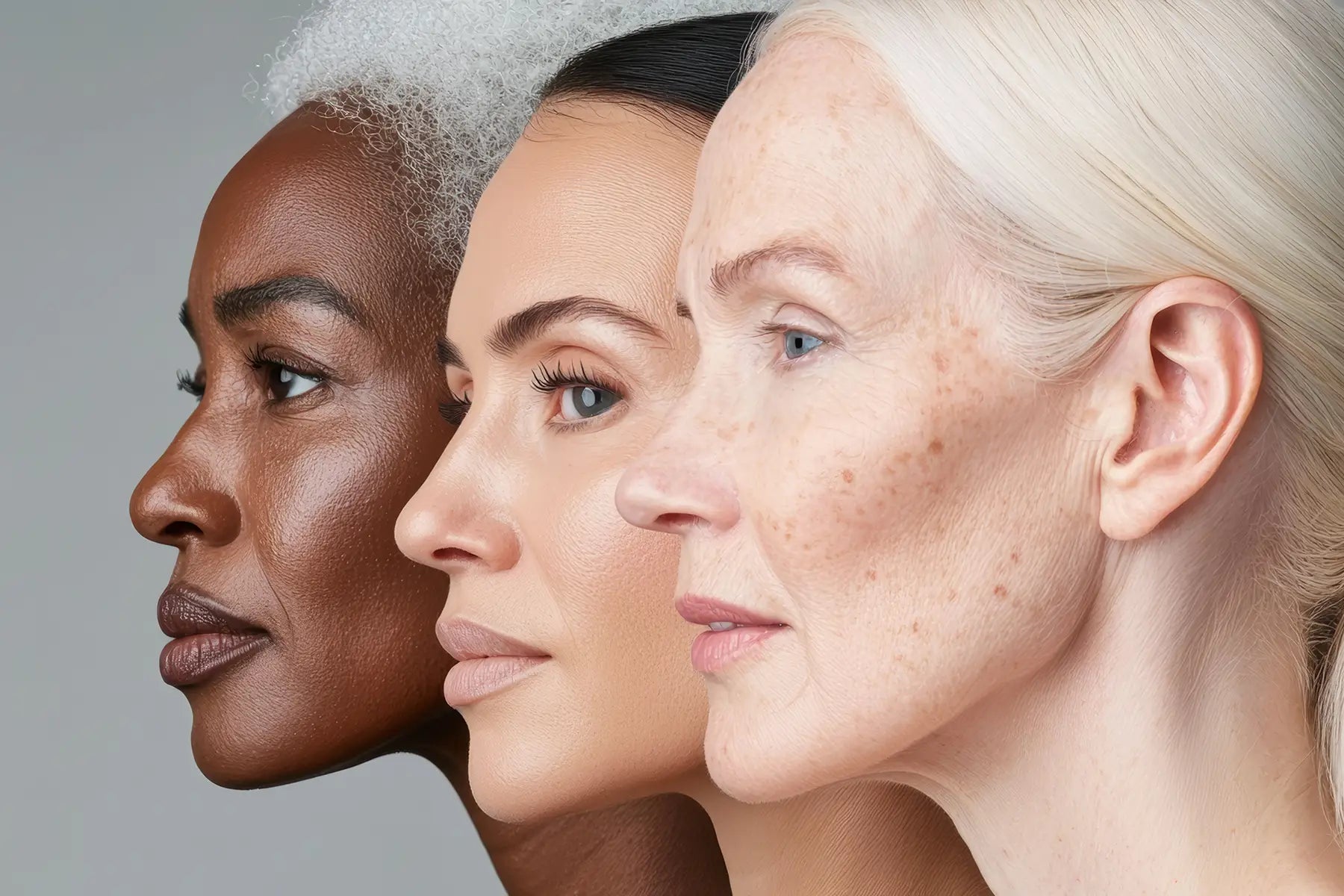Understanding what makes your skin unique
When it comes to skincare, knowledge really is power. One of the most important things you can learn is your skin type. It helps you choose the right products, avoid irritation, and get the best results from your routine.
The Four Main Skin Types
There are four primary skin types: normal, oily, dry, and combination. While many people also refer to “sensitive” skin, it’s not actually a true skin type.
Your skin type is determined by how much sebum (oil) your skin naturally produces:
- Dry skin doesn’t produce much oil, often feeling tight or flaky.
- Oily skin produces more than needed, giving a shiny or greasy appearance.
- Combination skin produces oil unevenly — for example, an oily T-zone but dry cheeks.
- Normal skin is, well, “just right.” If you’ve never noticed your skin being too dry or too oily, you likely fall into this category.
Think of it as the Goldilocks principle — not too much, not too little, just balanced.
The Fitzpatrick Scale
Another way to classify skin is by using the Fitzpatrick Scale. This isn’t based on oil production but rather on genetic markers — your eye, hair, and skin colour, and how easily you burn or tan.
The Fitzpatrick scale helps determine things like your sun sensitivity, while the sebum-based system helps guide your skincare routine. Both are useful, and neither is better — they just tell you different things about your skin. Knowing both gives you a more complete picture, but it’s not essential if you’re seeing qualified skin professionals.
At Austin Skin, we believe the more you know about your skin, the better choices you’ll make.
Sensitive vs Sensitised Skin — Not the Same Thing!
Many people say they have “sensitive” skin, but in most cases, their skin is actually sensitised.
The difference comes down to what’s causing the reaction:
- Sensitive skin is genetically coded — you’re born with it. It’s often linked to conditions such as dermatitis, eczema, rosacea, or acne. These are intrinsic factors, meaning they come from within.
- Sensitised skin, on the other hand, is triggered by external or extrinsic factors — like harsh products, over-exfoliation, detergents, medications, or environmental stressors. Once these irritants are removed, the skin usually returns to its previous type.
Many specialists dislike the term “sensitive skin” because it’s so broad and often misunderstood. If you asked around, chances are every second person would claim to have sensitive skin!
How to Figure Out What’s Really Going On
If your skin has suddenly become red, tight, itchy, or reactive, ask yourself:
- Has it always been like this?
- Did something change — a new product, medication, or detergent?
- Does it flare up at certain times or with certain triggers?
If it hasn’t always been this way, your skin may just be sensitised. In that case, it’s time to go back to basics — focus on barrier repair with gentle, nourishing products and keep things simple until your skin recovers.
Once your skin has calmed down, you can gradually rebuild your routine. Don’t start building a skincare plan around “sensitive skin” until you know what’s really happening.
And if you’re unsure where to start — we’re always here to help.
Stay tuned for our upcoming post on the Blushless Kit and why a personalised skin consult at Austin Clinic could be your best next step.
SHOP AUSTIN SKIN - KNOWVEMBER COLLECTION








